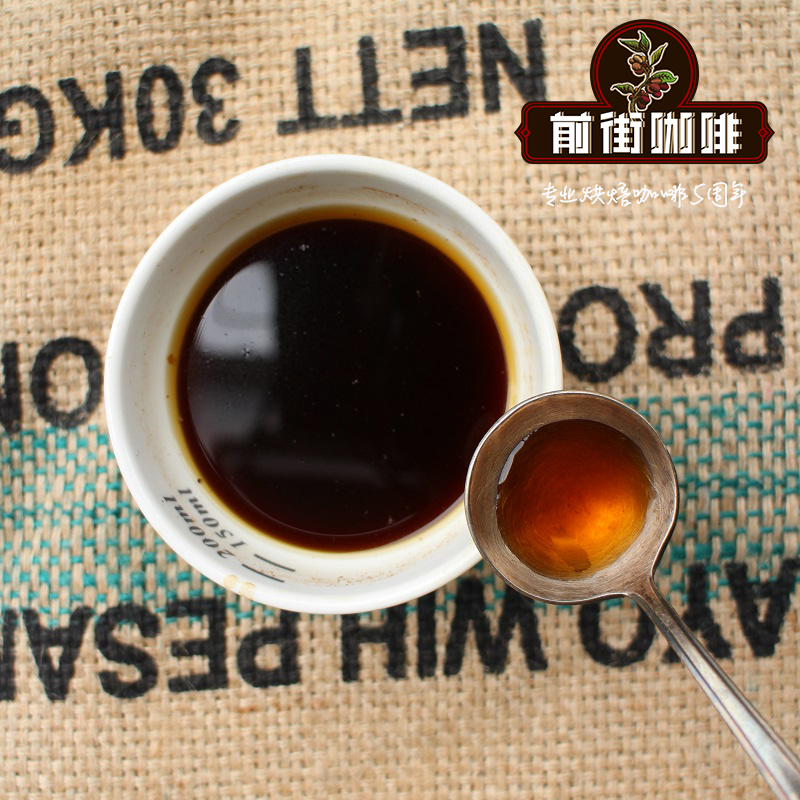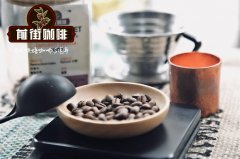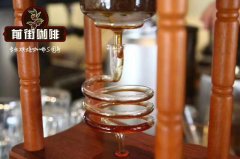Do you know how many kinds of coffee there are? know the types and flavor characteristics of coffee.

Professional coffee knowledge exchange more coffee bean information please follow the coffee workshop (Wechat official account cafe_style)
Now walking into a coffee shop, you can see not only cappuccino, latte, mocha and other coffee, but also coffee from different countries. People who are in initial contact with boutique coffee know something about it, and it is easy to order.
Types and characteristics of coffee
1. Espresso (Espresso)
The original text is in Italian, which means "make it for you right away" and is commonly known as Italian espresso. Espresso is the use of high pressure, so that boiling water quickly through the coffee powder in just a few seconds, to get about 1 ounce of coffee, bitter and fragrant.
2. Espresso Macchiato
The original text of Macchiato is Italian, which stands for "imprint, imprint". It is pronounced "Macchiato", but we are used to calling it Macchiato. Macchiato is to add a thin layer of hot milk foam to the espresso to keep the coffee warm. The delicate and sweet milk foam can cushion the bitter impact of espresso. If you want to drink coffee but can't give up the sweetness, you can choose macchiato.
3. American coffee (Americano)
Black coffee is made using instruments such as drip coffee pots, siphon pots, French presses, etc., or a large amount of water is added to Italian espresso. The taste is light, but because of the long extraction time, the caffeine content is high.
4. White coffee (Flat White)
Malaysian native products have a history of more than 100 years. White coffee does not mean that the color of coffee is white, but uses special coffee beans and special skimmed cream raw materials, after special processing of coffee, glycol aroma does not hurt the intestines and stomach, retaining the original color and flavor of coffee, the color is lighter and softer than ordinary coffee, so it is named white coffee.
5. Latte (caf è Latte)
The latte is as simple as pouring nearly boiling milk into a freshly made espresso. In fact, there is no fixed rule on how much milk is added, and it can be freely mixed according to individual taste.
6. Campbell Blue (Espresso Con Panna)
In Italian, Con means stirring, Panna is whipped cream, and Campbell blue means espresso with whipped cream. There is a saying that the authentic Campbell Blue should be served with a chocolate or toffee, first put the chocolate or toffee in your mouth, and then drink coffee to let the delicacy bloom in your mouth.
7. Brewer / half latte (Cafe Breve)
Much like a latte, the difference is that it is not milk, but a mixture of half-milk and half-cream, sometimes with a little foam.
8. Cappuccino
The traditional cappuccino is 1/3 espresso, 1/3 steamed milk and 1/3 foamed milk. Cappuccinos are divided into dry and wet ones. Dry cappuccino (Dry Cappuccino) refers to the conditioning method with more milk bubbles and less milk, and the coffee tastes stronger than milk flavor. Wet cappuccino (Wet Cappuccino) refers to the practice of fewer milk bubbles and more milk, with the smell of milk overshadowed by the thick smell of coffee, which is suitable for those with light taste.
9. Caff è Mocha
One of the oldest coffee, named after the famous port of Mocha. Mocha is a mixture of Italian espresso, chocolate syrup, whipped cream and milk. It is a variant of Italian latte.
10. Caramel Caramel Macchiato
Macchiato with caramel is a drink made by adding espresso and vanilla to strong hot milk and finally sprinkled with pure caramel. it is characterized by three different flavors in one drink.
11. Irish coffee (Irish Coffee)
A kind of coffee that looks like both wine and coffee is made by mixing hot coffee, Irish Whiskey, cream and sugar.
12. Vienna Coffee (Viennese Coffee)
Austria's most famous coffee, sprinkle a thin layer of sugar or rock sugar on the bottom of a warm coffee cup, then pour hot and thick black coffee into the cup, and finally decorate the coffee surface with two tablespoons of cold fresh cream. A cup of Viennese coffee is ready.
What is the common practice of coffee?
1. Italian latte
You need a small cup of Espresso and a cup of milk (150mm 200ml). Lattes contain more milk and less coffee, which is very different from Cappuccino. The latte is as simple as pouring nearly boiling milk into a freshly made espresso. In fact, there is no fixed rule on how much milk is added, and it can be freely mixed according to individual taste.
2. American latte
You need a small cup of Espresso and a cup of milk (150mm 200ml). The latte contains more milk than coffee, and then add some cold foamed milk to the hot milk. Starbucks American lattes are made this way, with Italian espresso at the bottom, milk heated to 65cm and 75 ℃ in the middle, and finally a layer of cold milk foam of no more than half a centimeter.
3. Ole Coffee
The French are the most enthusiastic proponents of Ole Coffee. You will see the round Orei Cup on the breakfast table in France, which is the source of their good mood for the day. Interestingly, compared with all the coffee cups, the cup used by the French to hold Ole coffee is probably the largest.
Practice:
Use utensils and materials: the right amount of deep-roasted coffee beans, the right amount of milk (the proportion of fresh coffee and milk is 1:1).
(1) soak the cup (warm cup) in hot water to raise the temperature, and then pour out the excess water for use.
(2) after grinding the deep-roasted coffee beans, pour the coffee powder into the filler, flatten the coffee powder with a press stick, then buckle the filler to the extraction port of the espresso machine, and extract Espresso (the proportion of fresh coffee milk is 1:1).
(3) take the right amount of milk and put it under the steam nozzle of the espresso machine to steam it into hot milk.
(4) pour steaming milk into a cup.
(5) shake the cup up and down to make the foam rise.
(6) finally, pour the Espresso into the cup slowly.
4. Cappuccino
The traditional cappuccino is 1/3 espresso, 1/3 steamed milk and 1/3 foamed milk. The full-bodied taste of espresso, coupled with lubricated foam, has a touch of essence and dew; sprinkled with foamed milk of cinnamon powder, mixed with the aroma of bottom-up Italian coffee, the new generation of coffee is fascinated by it.
The method of making cappuccino coffee:
On the basis of Italian espresso, add a thick layer of foaming milk to become a cappuccino. The quality of espresso can be seen in milk and foam, but it is still an important factor in determining the taste of cappuccino.
Pour the partially skimmed milk into a pot, then use a foamer to foam and inflate the milk, and let the milk be as uniform as whipped cream without burning. The cappuccino coffee cup should be warm or the milk foam will spread. You can usually put these cups on the top of the coffee maker to keep warm.
Pour the milk and foam on top of the espresso and form a natural layer, just like wrapping the coffee below. Note that the brewed Italian coffee is about five cents full, and the hot milk that has been foamed is about eight cents full.
Finally, you can sprinkle a little cinnamon or chocolate powder and pour the rest of the milk together to make a delicious cappuccino.
END
Important Notice :
前街咖啡 FrontStreet Coffee has moved to new addredd:
FrontStreet Coffee Address: 315,Donghua East Road,GuangZhou
Tel:020 38364473
- Prev

If you accidentally make the American style, it becomes long black, so Long black and American
Professional coffee knowledge exchange more coffee bean information Please follow the coffee workshop (Wechat official account cafe_style) has been exposed to coffee for such a long time, you must know the differences between many different coffee drinks, you may also have heard of Long Black, then this coffee, which is always confused with American coffee, except that the raw materials and appearance are exactly the same as American coffee.
- Next

How much do you know about the varieties of coffee beans? what are the types and origin of coffee beans?
Professional coffee knowledge exchange more coffee bean information Please pay attention to the coffee workshop (Wechat official account cafe_style) the determinants of a good cup of coffee, 70% comes from the internal quality of beans, while the quality of beans lies in the variety, good varieties grow and blossom and bear fruit in a suitable micro-climate environment, after appropriate post-processing (washing / sun / semi-washing / honey place) after harvest
Related
- Beginners will see the "Coffee pull flower" guide!
- What is the difference between ice blog purified milk and ordinary milk coffee?
- Why is the Philippines the largest producer of crops in Liberia?
- For coffee extraction, should the fine powder be retained?
- How does extracted espresso fill pressed powder? How much strength does it take to press the powder?
- How to make jasmine cold extract coffee? Is the jasmine + latte good?
- Will this little toy really make the coffee taste better? How does Lily Drip affect coffee extraction?
- Will the action of slapping the filter cup also affect coffee extraction?
- What's the difference between powder-to-water ratio and powder-to-liquid ratio?
- What is the Ethiopian local species? What does it have to do with Heirloom native species?

